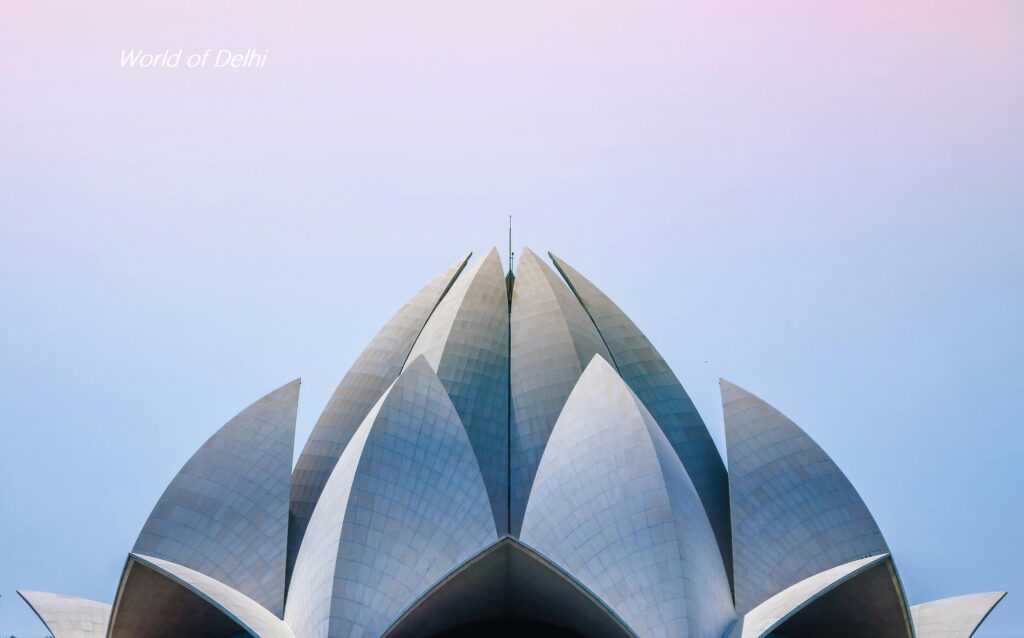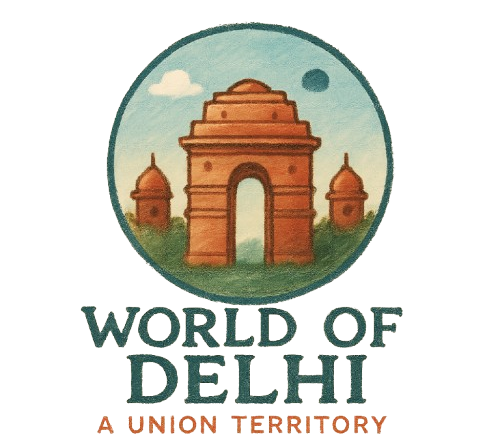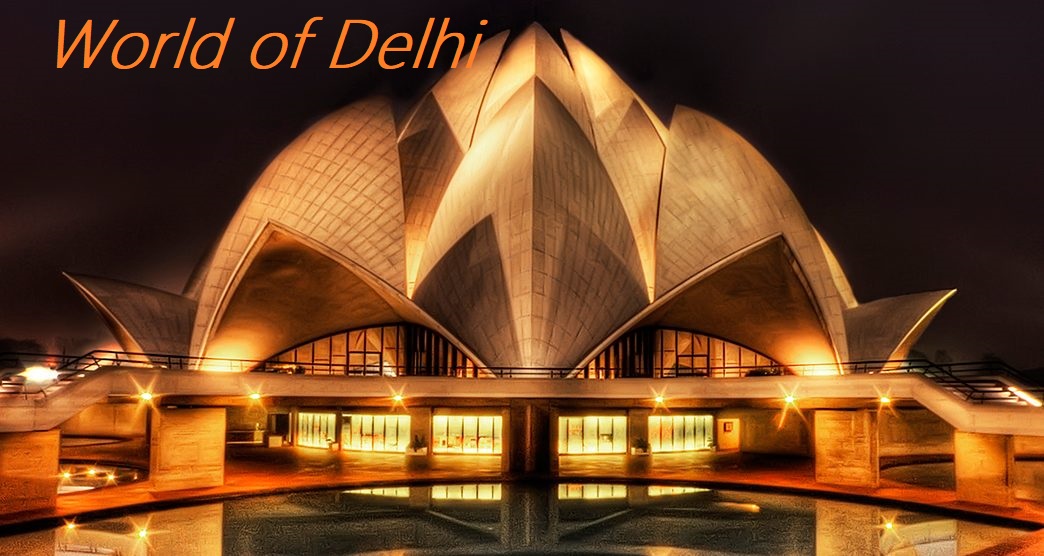The Lotus Temple, located in New Delhi, is one of the most iconic architectural masterpieces and a symbol of universal brotherhood and peace. Shaped like a blooming lotus flower, it stands as a serene place of worship for people of all religions and faiths.
What is the Lotus Temple?
The Lotus Temple is a Bahá’í House of Worship, meaning it is open to people of all religions. The Bahá’í Faith believes in the unity of all religions and mankind, and this philosophy is beautifully reflected in the structure and function of the temple.
- Inaugurated: 1986
- Architect: Fariborz Sahba (Iranian architect)
- Religion: Bahá’í Faith
- Design Theme: Inspired by the lotus flower, a symbol of purity and peace
- Built using: White marble from Rajasthan
Location & Accessibility

- Address: Bahapur, Shambhu Dayal Bagh, Kalkaji, New Delhi – 110019
- Nearest Metro Station: Kalkaji Mandir (Violet Line and Magenta Line) – 5 minutes walking distance
- Open: Tuesday to Sunday (Closed on Mondays)
- Timing: 9:00 AM to 5:00 PM (winter), 9:00 AM to 7:00 PM (summer)
- Entry Fee: Free
Unique Architectural Features
- 27 Petals: The building has 27 marble petals arranged in clusters of three to form nine sides.
- No Idols or Altars: Unlike traditional temples, it has no idols, images, or rituals inside.
- Central Prayer Hall: Can hold up to 2,500 people; visitors sit in silence and meditate.
- Nine Doors: Symbolize openness and universal access.
- Surrounding Pools & Gardens: Add to the tranquility and beauty of the site.
Spiritual Importance
The Lotus Temple is not tied to any one religion. It promotes:
- Unity of God
- Unity of Religion
- Unity of Humanity
There are no sermons, rituals, or ceremonies. Only silent prayer and meditation are encouraged inside the prayer hall.
Global Recognition
- Visited by over 100 million people – making it one of the most visited buildings in the world.
- Featured in architectural magazines globally.
- Winner of several architectural awards.
Tourist Experience
- Peaceful atmosphere for meditation, regardless of faith.
- Ideal for photography and nature lovers – especially around sunrise and sunset.
- Informative exhibitions and documentaries about Bahá’í Faith in the information center.
Visitor Guidelines
- Maintain silence inside the prayer hall
- Photography is not allowed inside the main hall
- No food or drinks inside
- Respect all faiths and visitors
- Entry is free, but long queues can form during weekends and holidays
🚌 How to Reach
- By Metro: Kalkaji Mandir Metro Station
- By Bus/Auto: Easily accessible from Nehru Place, Okhla, or Greater Kailash
- From Airport: Around 40 minutes via Metro or Cab
- Nearby Attractions: ISKCON Temple, Kalkaji Mandir, Nehru Place Market

